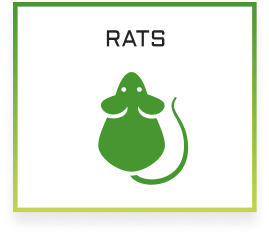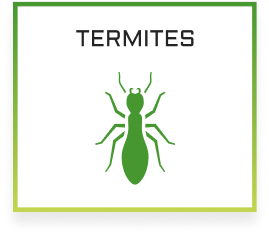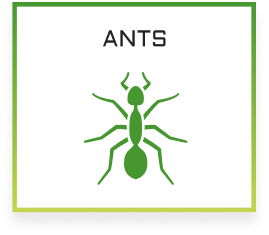15 Myths About Eco-Friendly Rat Control Debunked

When it comes to keeping our spaces free of pesky rats, many people turn to eco-friendly solutions. However, misinformation abounds regarding effective methods for rat control. In this blog, we will explore and debunk common myths surrounding eco-friendly rat control, providing you with clear, accurate information to help you make informed choices.
1. All Rat Traps Are Dangerous to the Environment
Many believe that all traps harm wildlife or are harmful. In reality, there are humane traps designed specifically for eco-conscious individuals. These traps are made to catch rats without causing injury, allowing for a release back into the wild. It’s important to choose traps wisely and look for those that prioritize animal welfare.
Furthermore, understanding which traps are environmentally friendly can empower you to take action. Some traps use non-toxic materials and avoid lethal mechanisms. This choice not only safeguards the environment but also aligns with a compassionate approach to pest control. In the end, being informed about your options helps you make better decisions.
2. Eco-Friendly Solutions Are Ineffective
Some think that going green means sacrificing efficacy. However, many natural methods have proven effective in managing rat populations. In fact, ecological solutions often tap into the natural behaviors and instincts of rodents, providing unexpected but successful outcomes.
For instance, using specific scents or repellents that mice naturally avoid can tremendously reduce local rodent activity. Additionally, natural deterrents, such as hot pepper spray or certain types of traps, can control infestations without harsh chemicals. Embracing a green approach enables a new perspective on pest management, demonstrating that effectiveness and environmental care can coexist beautifully.
3. Leaving Food Out Will Attract Fewer Rats If It's Organic
The myth that organic food won’t attract rats is misleading. All food, organic or not, can draw unwanted pests if left exposed. It’s essential to understand that the aroma and availability of any food source can be an open invitation for rats.
Moreover, keeping your food sealed and stored properly sends a strong message to lurking rodents. Whether you’re dealing with leftovers or pet food, being proactive about food storage is a crucial step in any eco-friendly rat control strategy. This practice not only helps manage pests but also preserves your food and reduces waste.
4. Essential Oils Are a Reliable Repellent
While some essential oils can deter rats temporarily, they are not foolproof or long-lasting solutions for infestations. Relying solely on essential oils can lead to a false sense of security, as the effects may diminish over time.
A balanced approach that combines essential oils with other control methods often yields better results. For example, pairing peppermint oil with sealing entry points creates a more robust strategy. By diversifying your methods, you not only increase your chances of success but also enhance the overall eco-friendliness of your practices.
5. A Clean Home Will Always Prevent Rats
While cleanliness is essential, it’s a misconception that it can guarantee no rats will enter your home. Other factors play a significant role in pest control. Access to food, water, and shelter are critical considerations that influence rat behavior.
Moreover, even pristine homes can experience infestations if openings are not secured. Continually inspecting your space for potential entry points—like cracks in the walls or gaps under doors—can significantly reduce your risk. Emphasizing a comprehensive approach that includes cleanliness as part of a larger strategy will lead to more effective results.
6. Eco-Friendly Rat Control Is Always More Expensive
Many assume that green options cost more, but many DIY methods can be cost-effective and safe for the environment. For instance, using everyday ingredients like vinegar or baking soda can provide effective, eco-friendly pest control solutions without breaking the bank.
By tapping into creative problem-solving, you can often replicate commercial solutions right at home. This not only saves money but fosters a sense of accomplishment. Plus, exploring DIY methods may lead you to discover new techniques and practices that you weren’t aware of before!
7. All Natural Rodenticides Are Safe
Not all natural rat poison is safe! It’s crucial to do your research on ingredients and potential side effects. Just because a product is labeled as ‘natural’ doesn’t guarantee that it’s safe for pets or children.
Before using any rodenticides, ensure you fully understand the implications of their usage. Opting for tested and certified options ensures a more secure environment for your family and pets. Knowledge is power, and being informed allows for responsible choices in managing pest problems.
8. You Can Use Cat Predators to Control Rat Populations
While cats may help deter some rodents, they aren’t a reliable solution and may not be effective in all situations. This reliance on cats can also lead to unintended consequences, such as harming native wildlife.
Cats can chase away some rats, but they may not eliminate the problem entirely. It’s generally better to adopt a multifaceted approach to pest control rather than placing the burden solely on a pet. This way, you can ensure that your rat control methods are comprehensive and thoughtful.
9. Scent Deterrents Will Solve Your Rat Problem
It’s a common belief that strong smells like peppermint will keep rats away, but these methods are often not sufficient alone. While scents can play a role, a more integrated approach is necessary for effective rat control.
Using scent deterrents in conjunction with physical barriers and traps may yield far better results. By combining different strategies, you create an environment less hospitable to pests. This helps ensure that your efforts are not in vain.
10. Rodents Can Be Easily Trained to Avoid Certain Areas
Another myth is that rats will learn to avoid traps or specific areas. In reality, their habits can be more complex and unpredictable. While they can learn from past experiences, relying solely on training methods is not the answer.
Instead of hoping they’ll avoid a place after one encounter, it’s better to remediate the environment. Removing food sources and sealing entry points is far more effective. This proactive strategy can help break the cycle of infestation and ensure lasting results.
11. All Eco-Friendly Methods Take a Long Time to Work
While some organic treatments may take longer to yield results, many natural solutions can be effective quickly with proper implementation. Understanding the right products and methods is essential in ensuring effectiveness.
For example, using traps strategically placed can provide immediate results. Likewise, maintaining a clean environment can dissuade rodents almost instantly. It’s crucial to adopt an informed, flexible approach that embraces the diversity of eco-friendly solutions.
12. Chemical Treatments Should Be Your First Choice
Some believe chemicals are the most reliable first choice, neglecting the effectiveness and safety of eco-friendly alternatives. This can often lead to unnecessary risks, both for your family and the environment.
Choosing green options not only benefits local wildlife but can mitigate health hazards. By seeing the worth of eco-friendly approaches upfront, homeowners can make better decisions that align with their ethical beliefs.
13. Using Plants Can Completely Prevent Rat Infestations
Planting deterrent herbs doesn’t guarantee a rat-free home; a combination of methods is usually more effective in control. While certain plants can repel rats, they work best as part of a comprehensive strategy.
Alongside planting, sealing entry points and keeping food stored securely will boost your defenses. This holistic approach increases your chance of success while creating a healthier outdoor environment.
14. All Rat Control Products labeled Eco-Friendly Are Safe
Not all products labeled as eco-friendly are truly safe. It’s important to check for certifications and research the ingredients. Just like with food, transparency in labeling is crucial for making responsible choices.
By ensuring the products you use align with your values, you can feel confident in your pest management tactics. This vigilance not only protects your household but promotes a healthier community and environment.
15. Once You Have Rats, Eco-Friendly Control Is No Longer Possible
Lastly, some think it’s too late for eco-friendly methods, but even established infestations can sometimes be controlled without harsh chemicals. Developing a strategy tailored to your specific situation is key.
Many have successfully managed rodent issues through environmentally conscious tactics. Therefore, never lose hope! With the right information and approach, you can turn things around and restore balance to your home.





